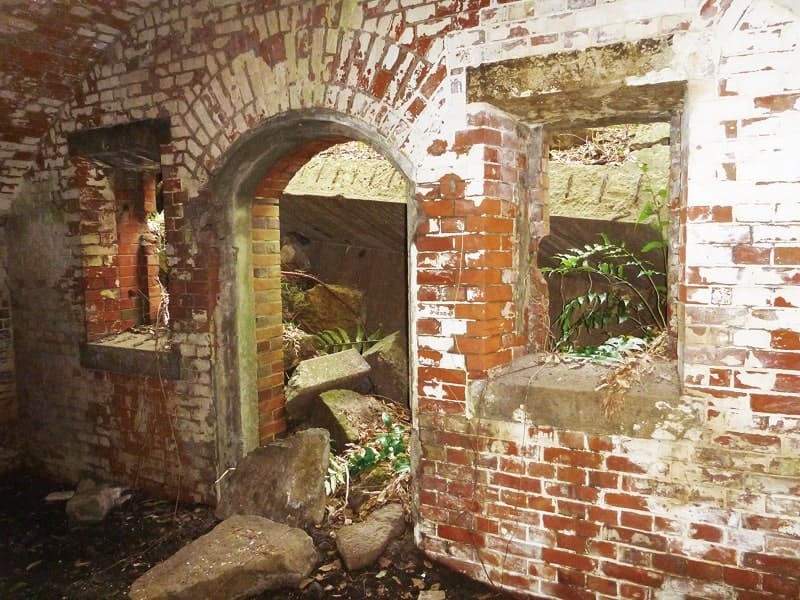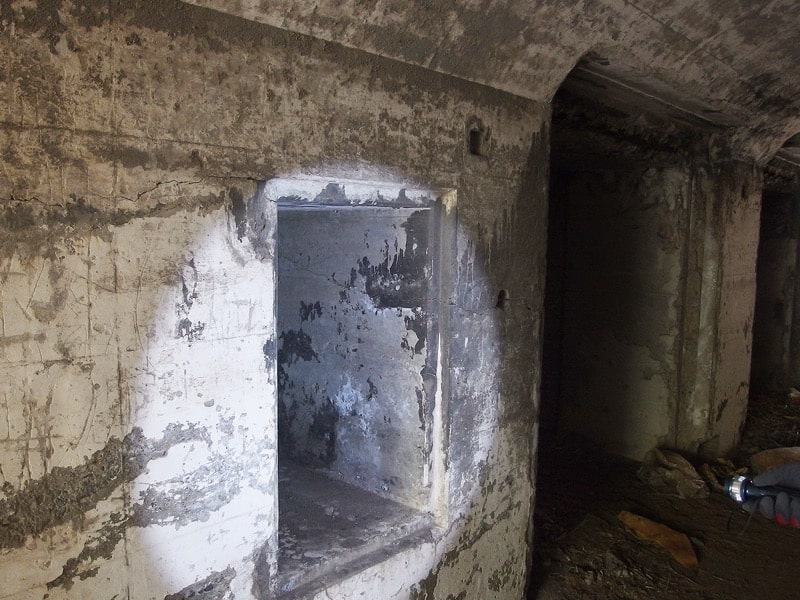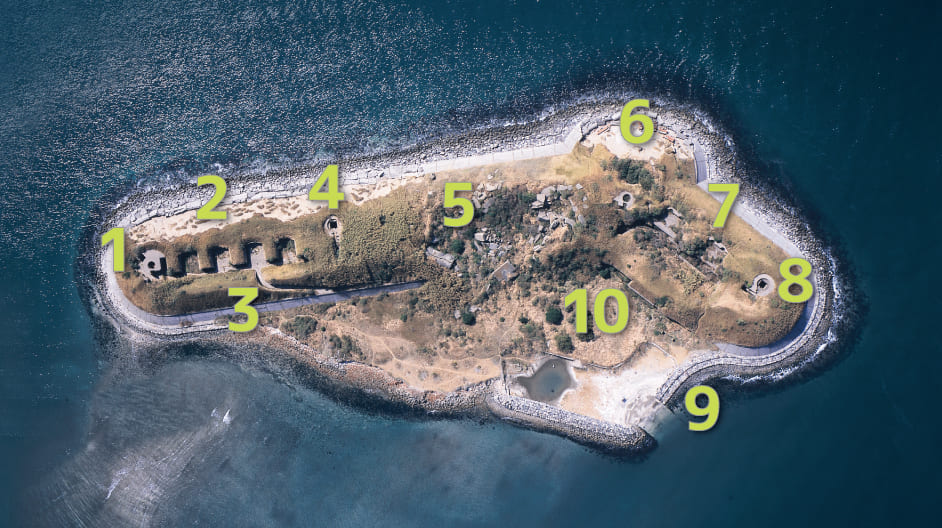
You can see the remains of many turrets etc., in the fort, that have been placed on the fort, but currently there is a possibility that dangerous materials may remain and public access is prohibited.
The photos on this site were taken at the Tokyo Bay Waterway Office, Kanto Regional Development Bureau, Ministry of Land, Infrastructure, Transport and Tourism, with landing permission from the owner.
8. Brick construction
The spiral staircase seems to be installed in a cylindrical brick structure.
At the beginning of construction, there was a 19 cm cannons, but after the Great Kanto Earthquake, it has been used as a lighting station.
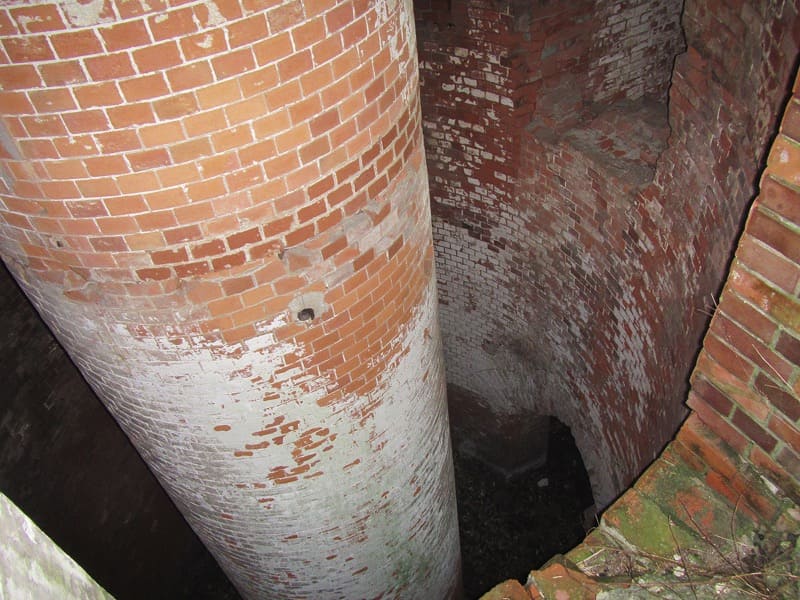
9. Water break
At present, sands have accumulated, but stone breakwaters have prevented waves from entering.
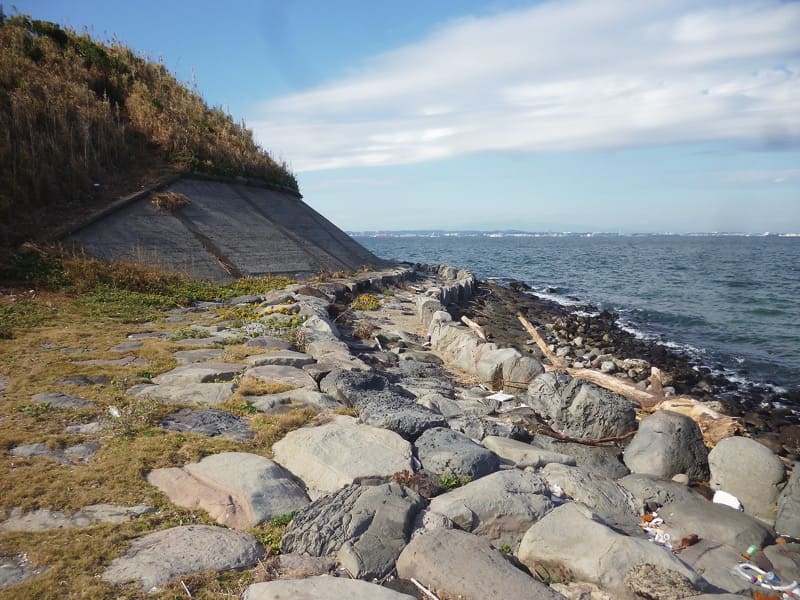
10. Bunker
A concrete bunker. It also connects to an internal battery through the underpass.
3. Third battery
This is called the third battery and is where the 28 cm howitzer was installed. It is a relatively new facility that was rebuilt after the Great Kanto Earthquake.
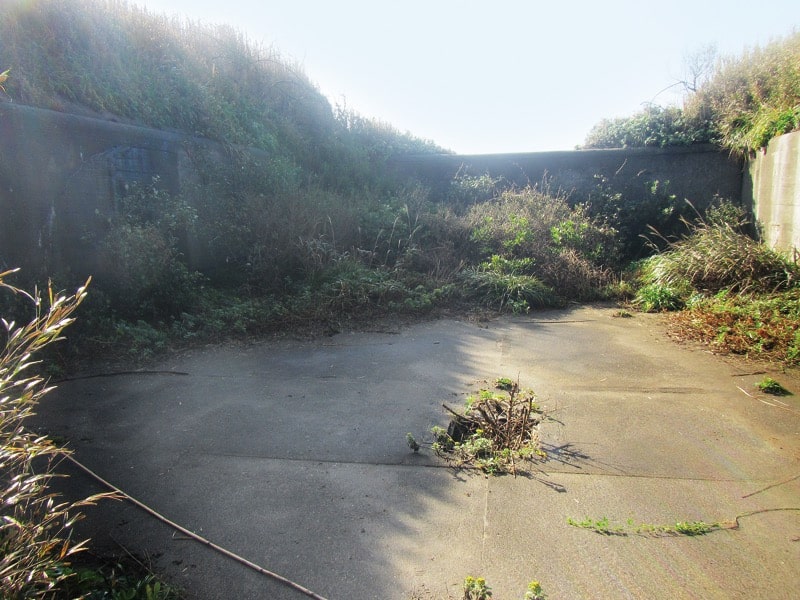
2. South of the third battery
The front of the third battery has been eroded by waves.
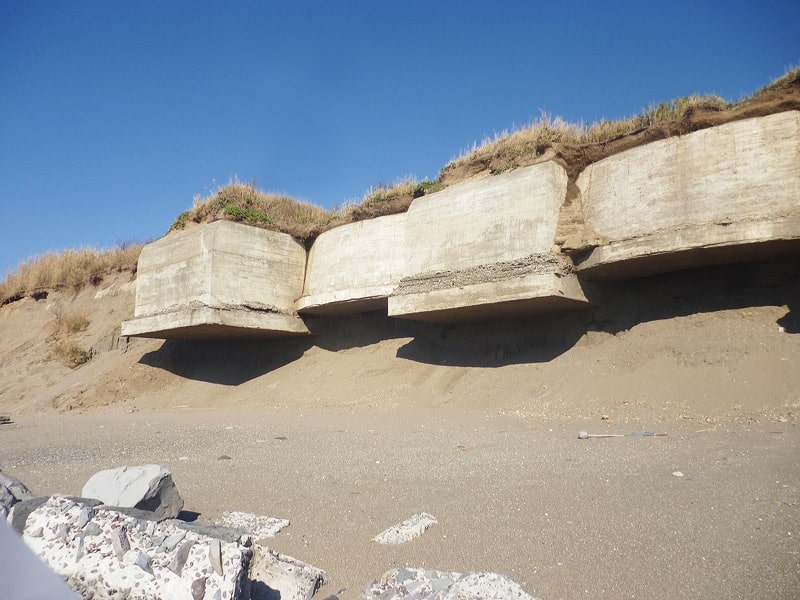
1. Left wing observation post
This is a facility called the Left wing observation post. An observation post was seemed to be always emplaced near the turret, selecting a place with a wide field of view.
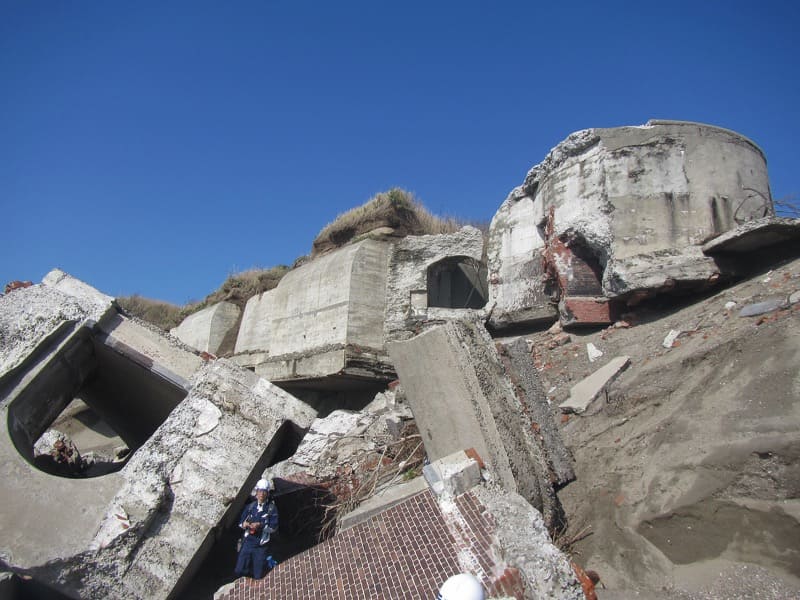
Left wing end turret
The left wing end turret (two 7.5 cm rapid-fire cannons) is believed to be added in Meiji 37 (1904) after the Sino-Japanese War.
4. Lighting post
This is a lighting post where a searchlight was installed. It was in the basement during normal times, and believed that it was raised through a vertical hole when they use.
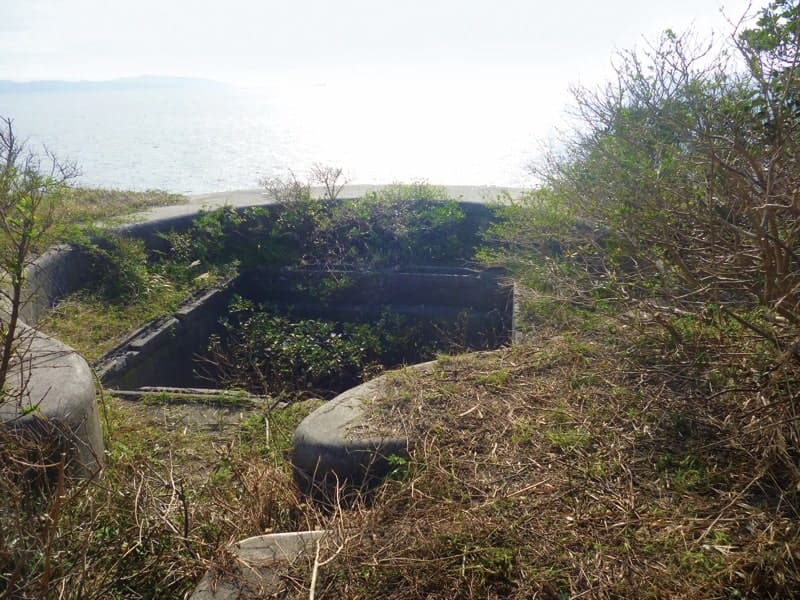
5. Second battery
This is the site of the second battery that functioned until the end of the war. A 15 cm cannon was relocated from the No2 sea fort. US Forces Demolished it by explosives after the war.

6. Central Turret in Convex position
This is the site of the central turret in convex position where the 7.5 cm rapid-fire cannon was installed. It was constructed of concrete and bricks, but has collapsed significantly due to the influence of waves.
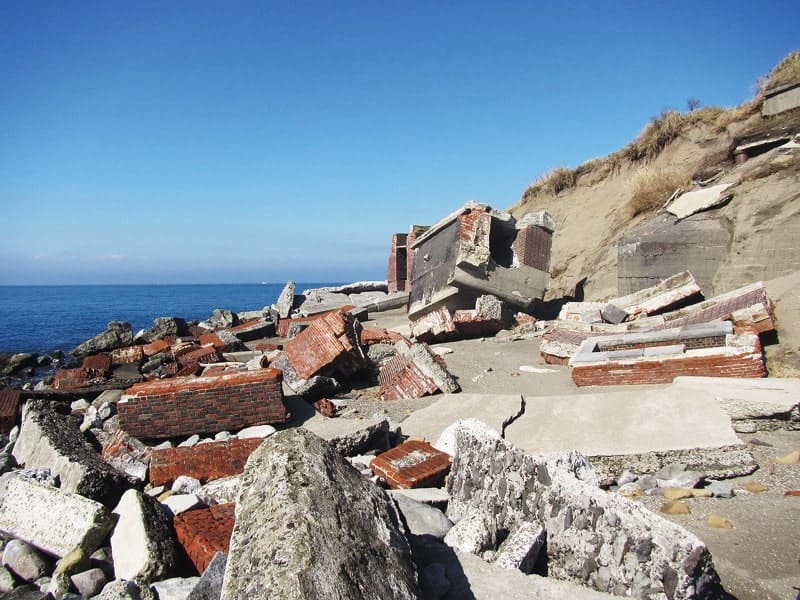
7. First Battery
Artificial stone remains near the first battery. Artificial stone is a valuable example because it was not used in other Tokyo Bay fortresses.
Note: The stone-making method is a method in which limes and hardening agents (nigari and seawater) were added to decomposed granite soil (masado) and compact them.
Inexpensive limes were used as a binder instead of expensive cement at the time.
This is a reinforced concrete bridge located on the 1st battery. Due to the demolition by explosives by the US forces after the war, the reinforcing iron bars are greatly curved.
This is the site of the first battery where the 12cm rapid-fire cannon was installed. It is believed to have been installed before the Russo-Japanese War.
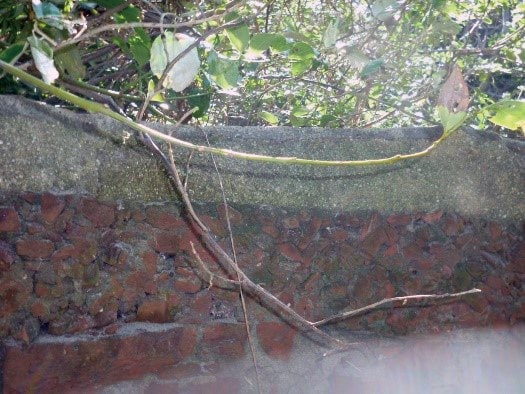
Artificial stone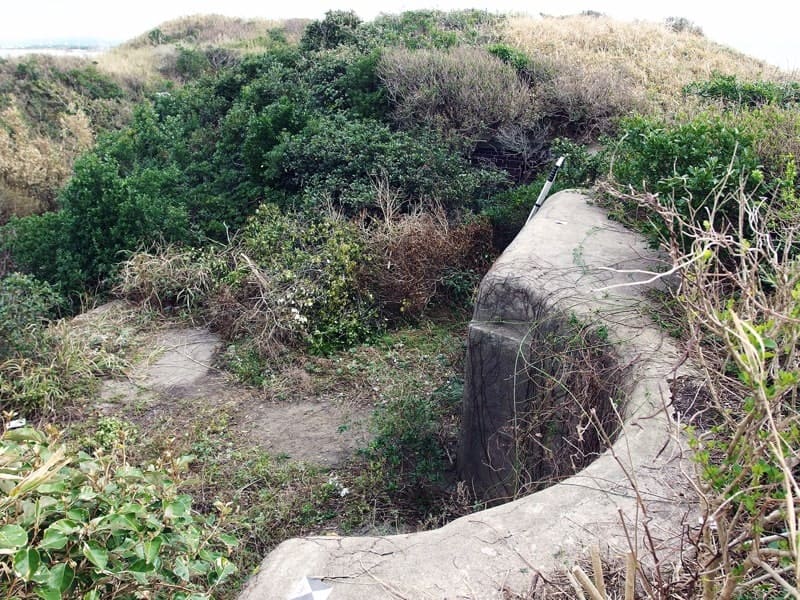
Site of the first battery 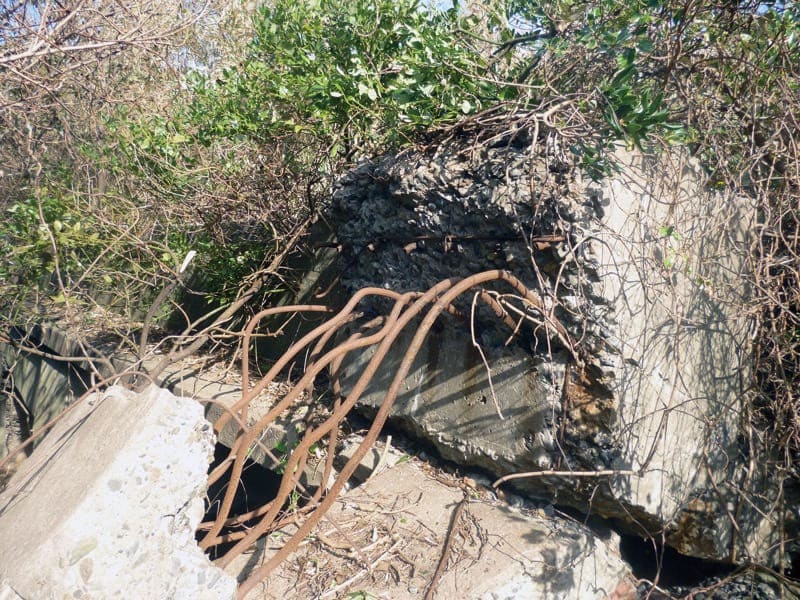
Reinforced concrete bridge

